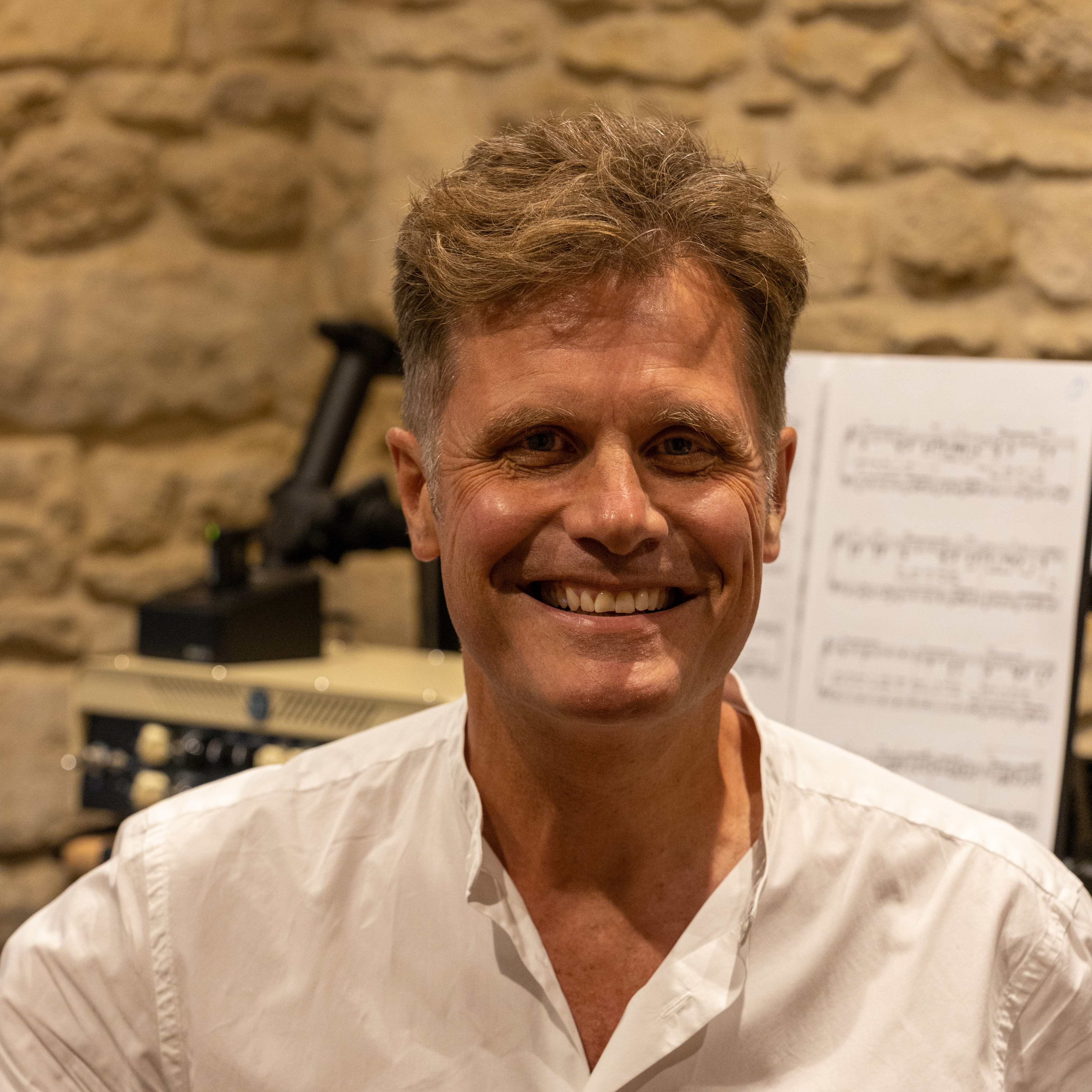Best stage pianos 2025: Our pick of the finest keyboards for live performance
Our guide to the top stage pianos for gigging musicians, with options from Roland, Yamaha, Korg, Dexibell, Nord, Kawai and more.
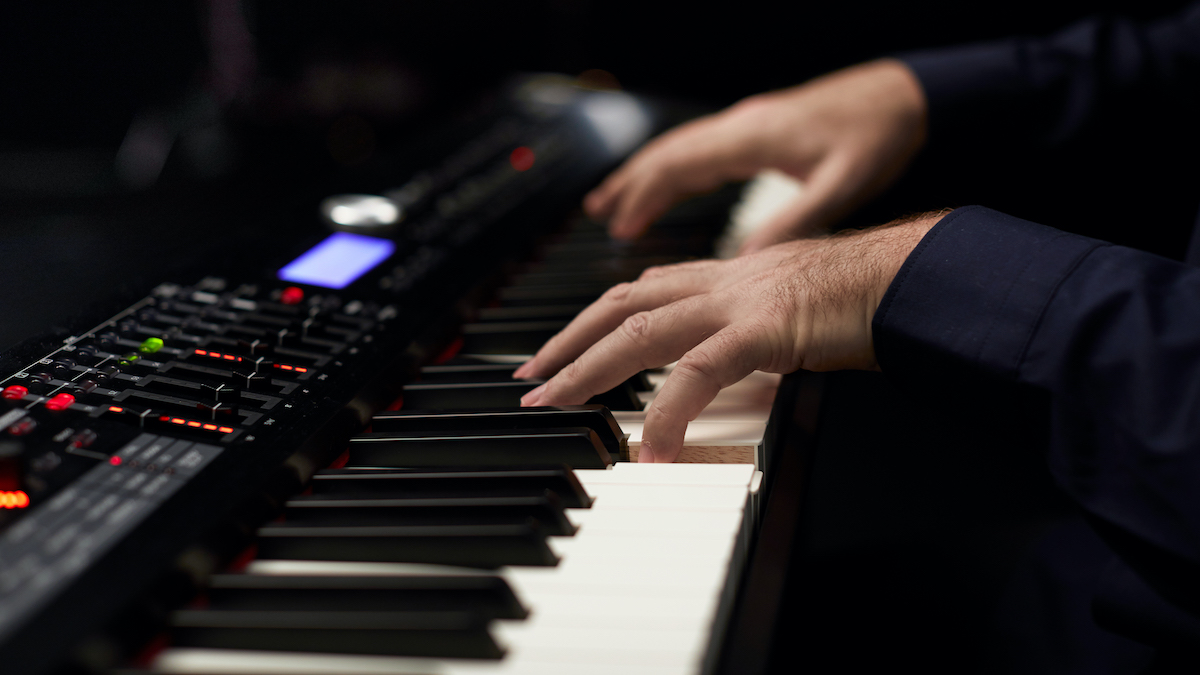
Looking at buying one of the best stage pianos? Perhaps, you're getting back into gigging again, or you've got a cushty number working in a theatre or a place of worship. Maybe you're planning to take your band out on the road for the very first time, or you're a singer songwriter who dreams of having an instrument more versatile than a guitar to accompany you.
Whatever your reasons for wanting a stage piano, you've probably already worked out that a simple home keyboard isn't going to cut it on tour. Stage pianos are built tough for the rough and tumble of gigging so that they'll work reliably night after night. More often than not, they also feature stage-friendly top panels that are easy to navigate even under the gloomiest stage lighting. But the most important feature, aside from great sounds, is the ability to be hooked up to a PA system or mixing desk via a pair of line outputs. It’s this key functionality that differentiates stage pianos from their home digital piano counterparts, and whilst almost all home digital pianos will have built-in speakers, it’s by no means standard for stage pianos to feature them.
Unsurprisingly, stage pianos are biased towards producing fantastic piano sounds, both acoustic and electric (EP), and they'll almost certainly boast some wonderful organ models too. That may be enough for you, but if you work in theatre you'll want a whole orchestra under your fingertips - everything from reedy woodwinds to pizzicato strings. Some stage pianos feature a broader range of sounds than others, so you'll need to pick wisely.
In this guide we'll be taking you through many of the best stage pianos available today, aimed at a variety of gigging needs and budgets.
Best stage pianos: Quick menu
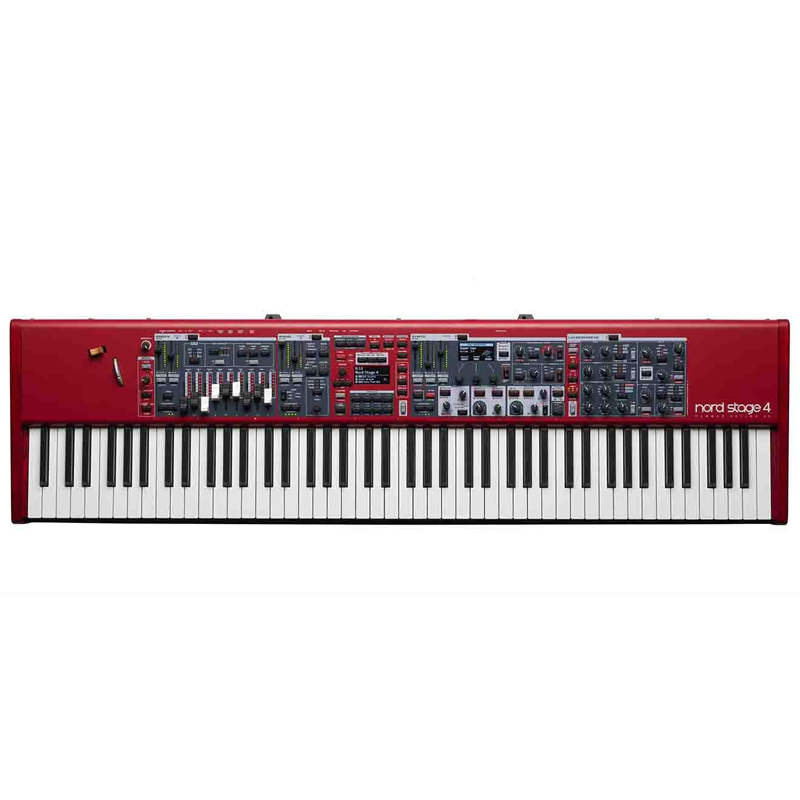
Through a combination of superb playability, sound quality, durability and looks, the Nord Stage has become a true power player in the stage piano sector - there’s just something about the Nord Stage piano sound that sits brilliantly in a live mix. The previous flag bearer from Nord on our list, the Nord Stage 3, has now made a dignified exit stage left, making way for a talented newcomer in the shape of the Nord Stage 4.
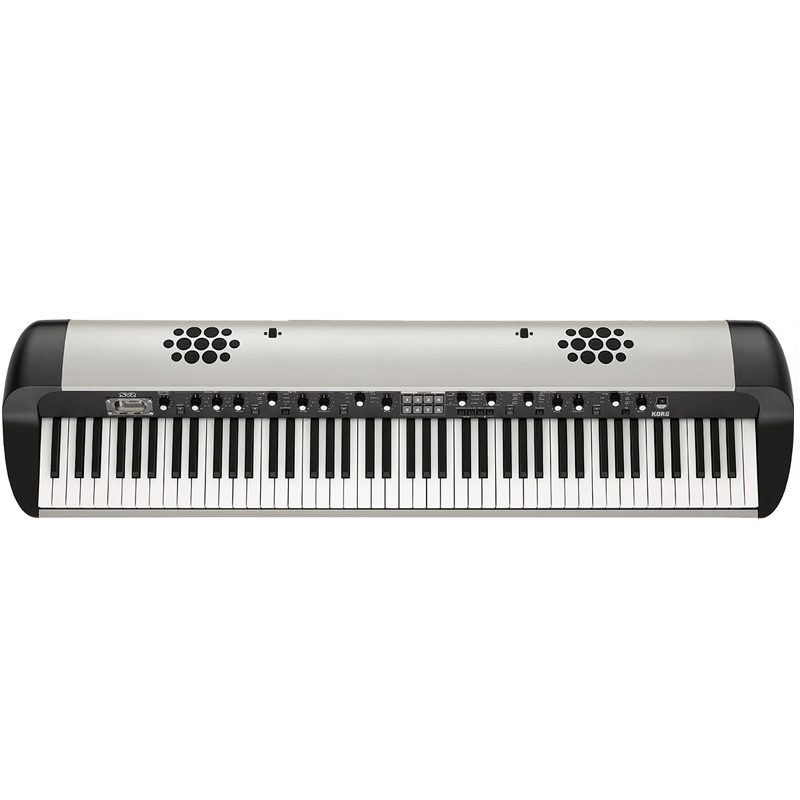
Wow, if this isn't the most unique-looking stage piano out there, we don't know what is. As you'd expect, befitting its retro styling, there is an eclectic collection of vintage sounds here including almost every American tine and reed EP, as well as a Japanese electric grand. Then there's the clavinets, tone-wheel organs, Vox combos and tube organs, the 70s analogue strings - the list goes on.
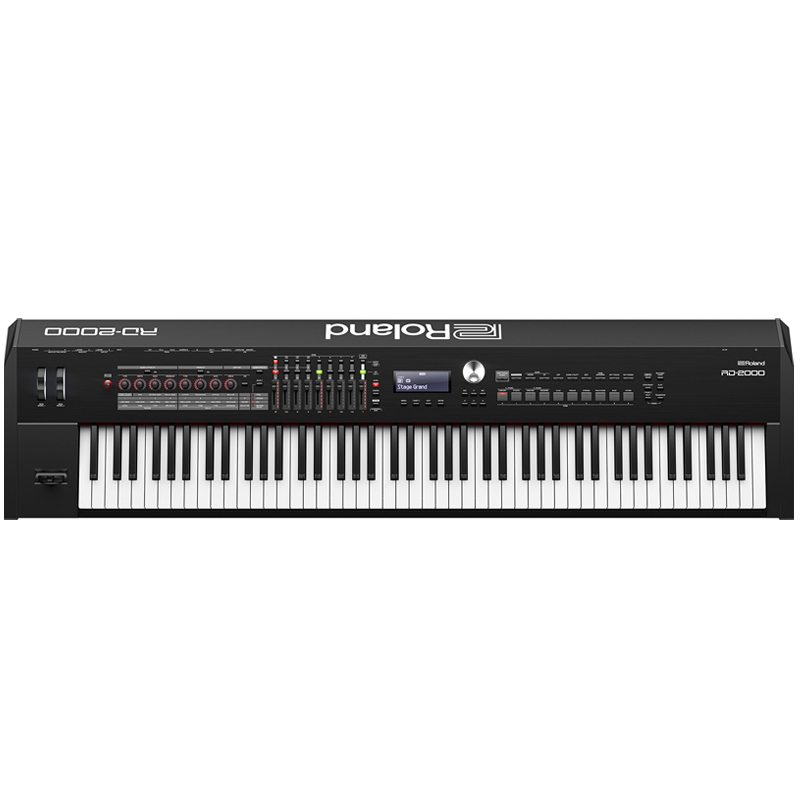
Roland says it has developed the RD-2000 to deliver the best possible playing experience for performing pianists, as well as the finest piano sounds for their audiences, regardless of genre. Here, it's all about the piano sounds. The somewhat plain looking top panel features a strip of eight rotary encoders, a panel of nine sliders, buttons for selecting banks/sounds, three mod wheels/levers and a small screen.
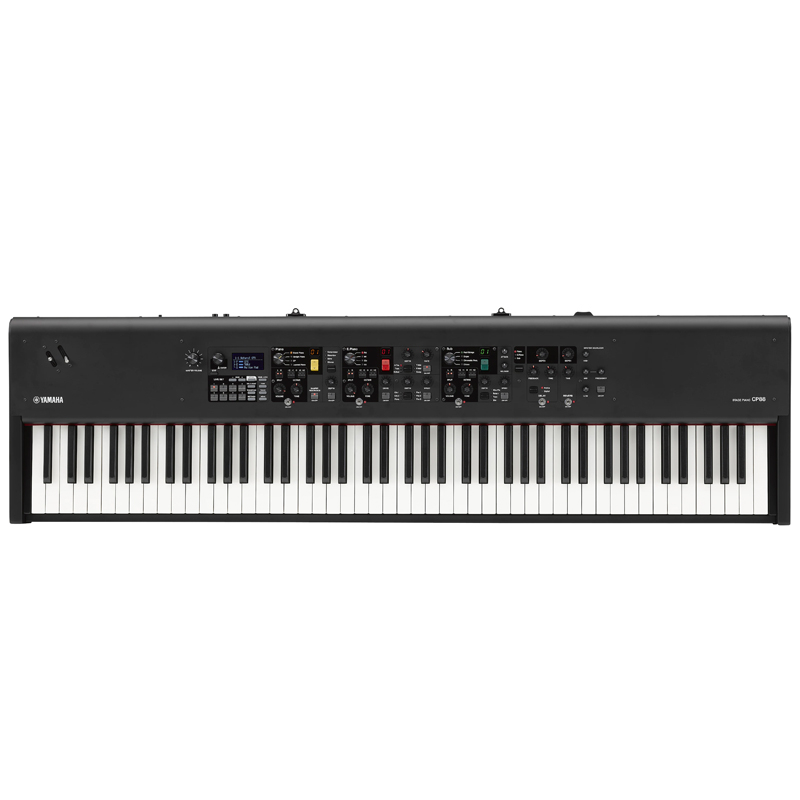
Yamaha knows a thing or two about pianos. It's been making fine acoustics for more than 130 years – provided your mansion is big enough it's quite easy to drop more than $/£100,000 on a Yamaha Grand. It would be just perfect in the corner of your chintz-lined music room… It has a strong pedigree in stage pianos too, launching its iconic CP-80 EP in the late-70s. In no time the Yamaha EP signature was heard all over the charts on both sides of the Atlantic.
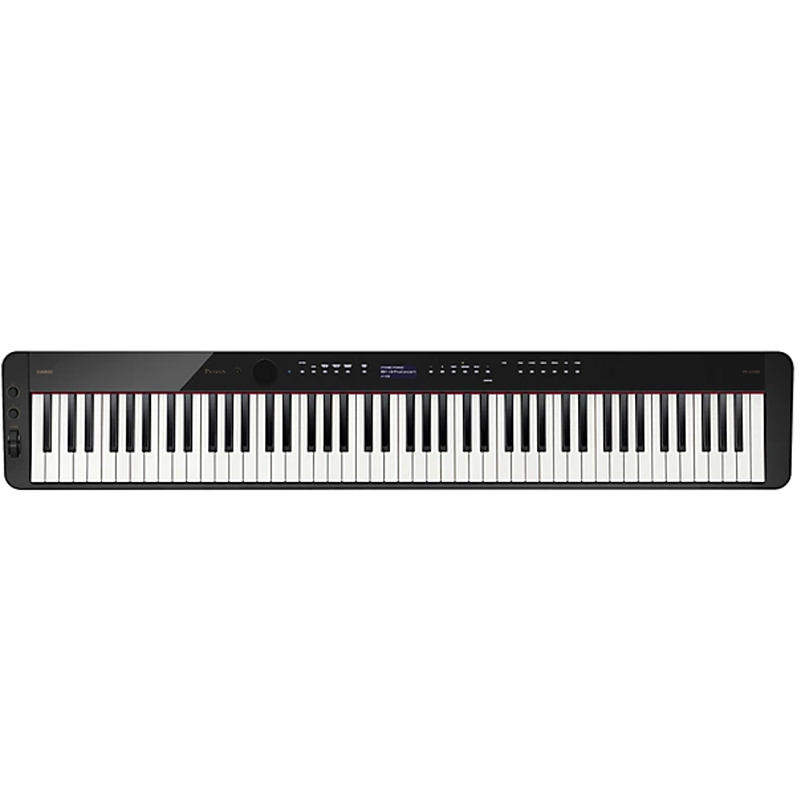
Casio markets its PX-S3100 as both a domestic portable digital piano and a professional stage piano, giving it a split personality that, once you understand it, makes more sense than you'd expect. Released in October 2021, this affordable 88-key Casio is really just a mild refresh of the PX-S3000 piano introduced at NAMM in 2019.
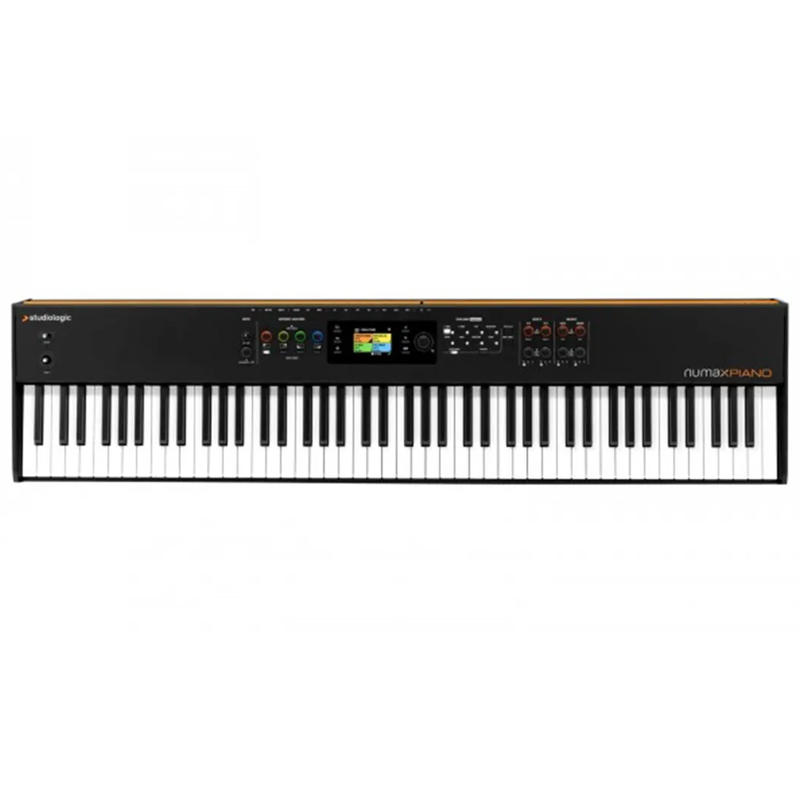
The Numa X Piano GT is a slightly different take on the stage piano. Not satisfied with it just being a performance-ready keyboard, Fatar-owned Studiologic has developed the Numa X Piano GT to assume the role of mixer and audio interface too.
Best stage piano overall
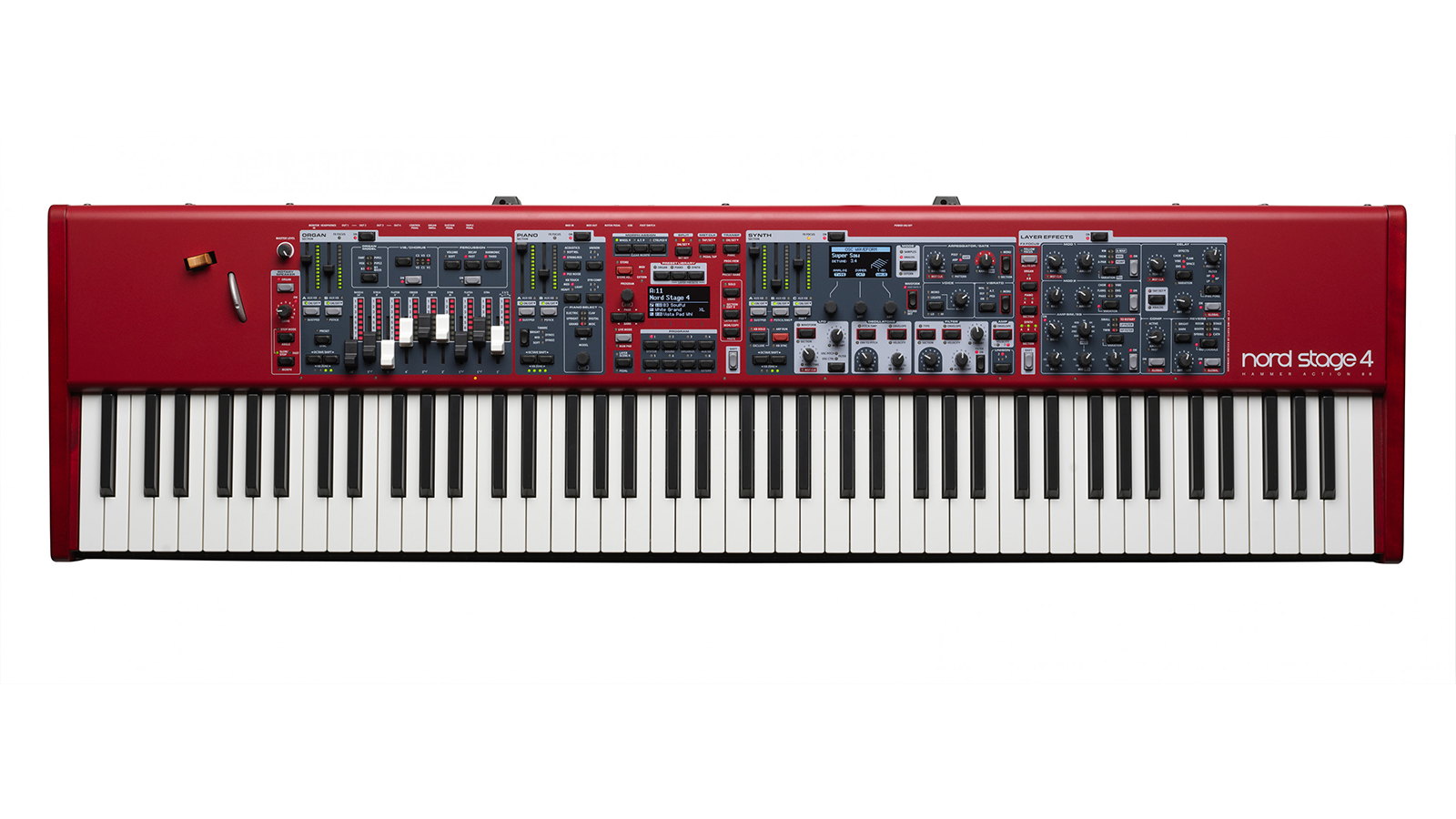
1. Nord Stage 4 88
Our expert review:
Specifications
Reasons to buy
Reasons to avoid
Through a combination of superb playability, sound quality, durability and looks, the Nord Stage has become a true power player in the stage piano sector - there’s just something about the Nord Stage piano sound that sits brilliantly in a live mix. The previous flag bearer from Nord on our list, the Nord Stage 3, has now made a dignified exit stage left, making way for a talented newcomer in the shape of the Nord Stage 4.
Its predecessor featured highly in this guide previously, so what improvements can potential owners of the fourth generation Nord Stage look forward to? Well, the sample memory has been doubled, with an extensive new collection of samples available, but the emphasis seems to have been on the layout of the front panel, which has been redesigned from the ground up to improve onstage workflow.
Easy to see on a dimly-lit stage, the LED faders allow you to blend multiple elements of a patch in real time during a performance. Each layered sound within a patch has its own dedicated FX controls right in front of you on the panel.
The Stage 4 comes with complete access to the extensive Nord Piano Library, which is chock-a-block with grand pianos, uprights, vintage electric pianos, harpsichords and clavinets, and now features dynamic compression and Unison on the piano section.
The Stage 4 is the first Stage model to feature Nord’s Triple Sensor keybed across all 3 models - the 73-key Compact version with the waterfall keys, the 76-key semi-weighted and the 88-note weighted version. The 3rd sensor increases resolution of detected velocity and improves repetition speed when playing piano.
It has access to the Nord Sample Library, a go-to collection of guitars, orchestral strings, brass, accordions, tuned percussion and woodwind. The Stage 4 also gets Nord's award-winning B3 Tonewheel organ simulation, with fully LED illuminated physical drawbars across all models.
Of course, Yamaha, Roland, Korg and the rest can rival these sounds. However, the Stage 4's pièce de resistance is the Nord Wave 2 Synth Engine - instead of giving you a smattering of synth sounds, Nord provides an entire, configurable synth with three synth layers, controllable via a dedicated central LED and full implementation of the Wave 2’s coveted polyphonic arpeggiator.
Each FX now has a selectable variation - such as a harder waveform for the tremolo effect for example - plus there’s a new pump effect that’s an emulation of sidechaining, the timing of which can be made controllable via a foot pedal. Spin recreates a spinning motion similar to a rotary cabinet, and there are new reverb types such as Cathedral mode, plus a vintage spring reverb which can be set to fully wet.
The control panel is orderly and coherent, and the quality of the knobs, sliders, switchgear and OLED screens is first class. All sorts of sophisticated splits, layers, songs, seamless transitions and crossfades are possible without laborious menu-diving. The quality of the keyboard, indeed the whole unit, is faultless, but that's to be expected at this price.
Best for retro tones
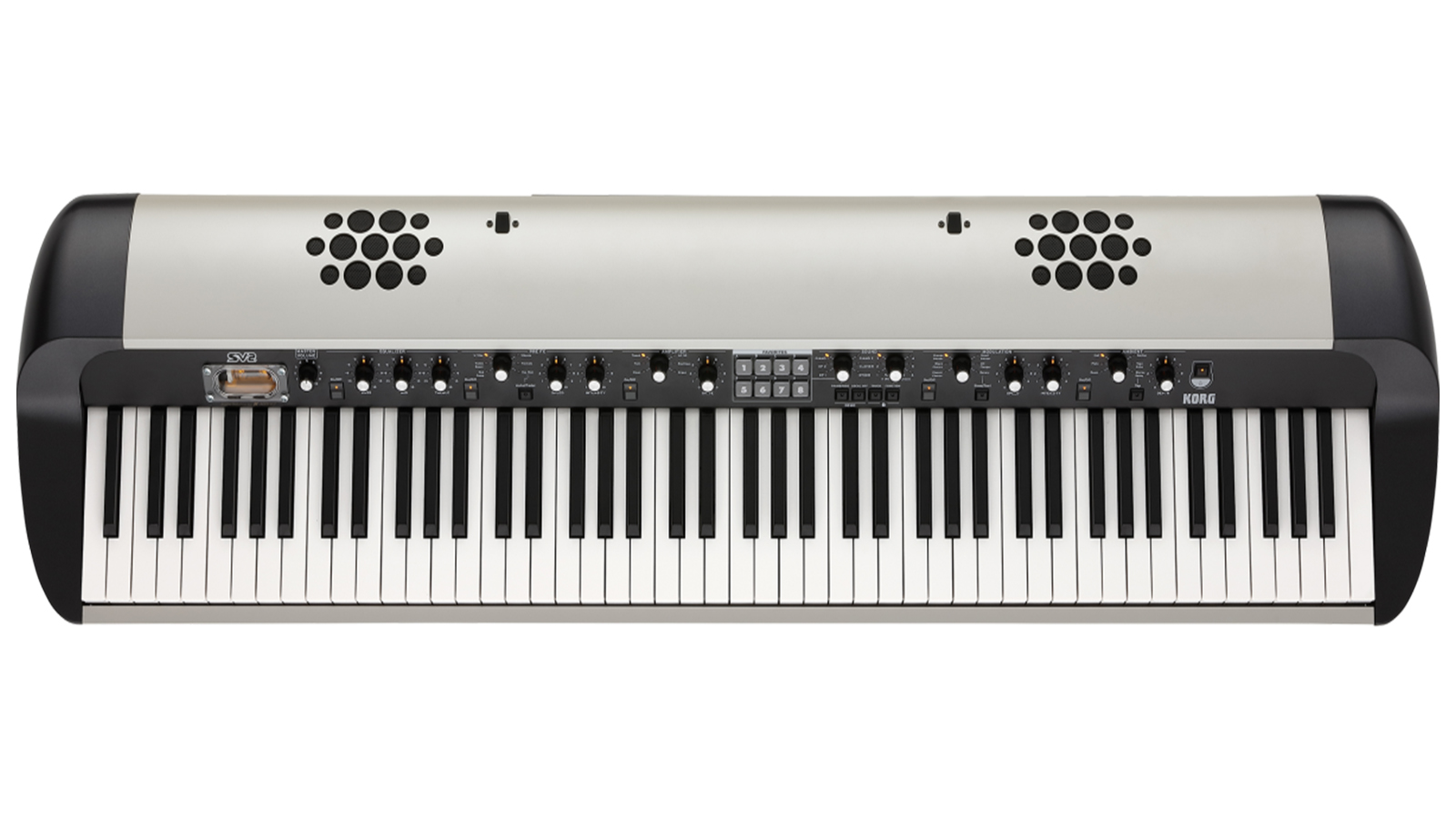
2. Korg SV-2 88
Our expert review:
Specifications
Reasons to buy
Reasons to avoid
Wow, if this isn't the most unique-looking stage piano out there, we don't know what is.
As you'd expect, befitting its retro styling, there is an eclectic collection of vintage sounds here including almost every American tine and reed EP, as well as a Japanese electric grand. Then there's the clavinets, tone-wheel organs, Vox combos and tube organs, the 70s analogue strings - the list goes on.
All can be soaked in retro warmth by the similarly vintage amp section that includes models with familiar names like Twin, Tweed and AC30. Then, there's that glowing 12AX7 valve to add some smooth drive when needed.
The SV-2 isn't by any means stuck in a time warp though. There are some truly gorgeous, timeless acoustic piano models, plus mallets, brass, pads and even modern FM synth tones, all controlled from Korg’s superlative RH3 weighted hammer-action keyboard. Three timbre layers are possible that, with the 128-voice polyphony, can inspire some genuinely cinematic soundscapes.
There's no LED screen - the top panel is so well-thought out the SV2 doesn't require one - and it lacks a pitch bender and mod wheel, but you can hook three foot pedals up to control everything from sostenuto to wah.
If internal speakers are a deal-breaker, for a little extra outlay you can plump for the SV2-S model, also available in both 73-key and 88-key flavours, which comes in a cool, silvery Airstream-style finish.
Best piano sounds
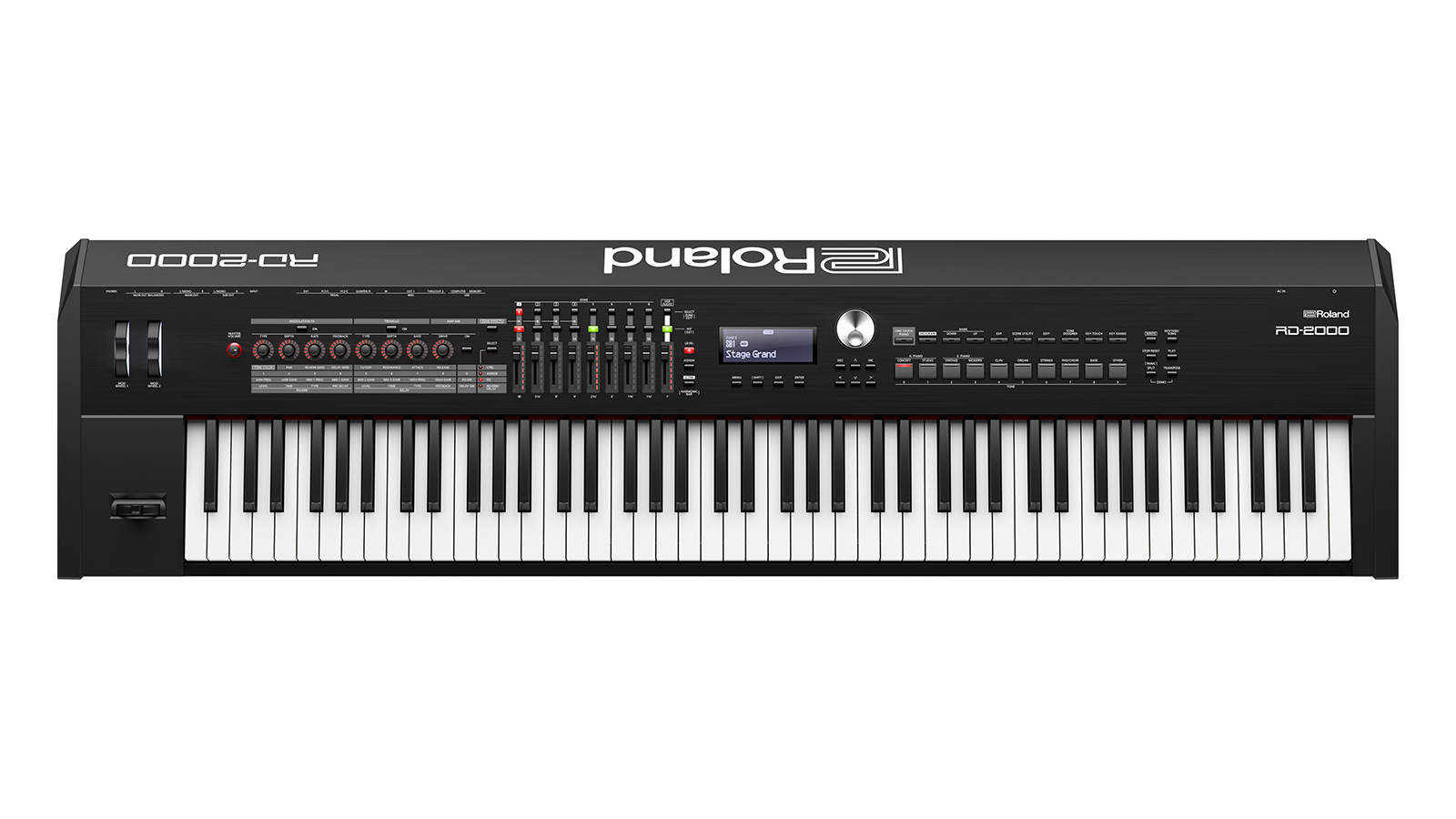
3. Roland RD-2000
Our expert review:
Specifications
Reasons to buy
Reasons to avoid
Roland says it has developed the RD-2000 to deliver the best possible playing experience for performing pianists, as well as the finest piano sounds for their audiences, regardless of genre. Here, it's all about the piano sounds.
Look up the word 'slab' in the dictionary and you'll find a photo of the RD-2000. Its design is brutal, functional, no-nonsense – a long strip of the darkest brushed aluminium. The somewhat plain looking top panel features a strip of eight rotary encoders, a panel of nine sliders, buttons for selecting banks/sounds, three mod wheels/levers and a small screen.
You're very much in the driver's seat with the RD-2000, the multi-function rotary knobs and sliders provide plenty of hands-on granular control for sounds and effects. They are all tracked with LED indicators too, so it's easy to keep an eye on your settings under dim stage lighting. In fact, almost every control on the RD-2000 is lit.
The keyboard is Roland's premium PHA-50 progressive hammer-action model with escapement and wood/plastic hybrid keys with ivory feel. This gives a 'grand' feel, so acoustic pianists will be right at home. Organists and synth players may need to adjust their playing styles accordingly.
There are two sound engines. Roland's V-Piano engine takes care of the acoustic models, while its SuperNatural engine delivers the electric pianos. V-Piano sounds are entirely modelled, which gives the added advantage of full-keyboard polyphony for a fuller, more authentic acoustic piano experience. SuperNatural sounds are partially sample based and have a max polyphony of 128.
Frankly, Roland nailed piano sounds years ago, they're some of the very best out there. Only you can decide whether you prefer its interpretations to Yamaha's, Kawai's or some other brand.
It's a given that Roland has chosen to shine the spotlight brightly on the piano sounds with the RD-2000. Nevertheless, it also features an additional 1,100 sounds that cover everything from vintage synths to brass. You can map different sounds to eight separate key range zones and save up to 100 different snapshots of your entire keyboard setup, making performances less of a performance.
Best for reliability

Specifications
Reasons to buy
Reasons to avoid
Yamaha knows a thing or two about pianos. It's been making fine acoustics for more than 130 years – provided your mansion is big enough it's quite easy to drop more than $/£100,000 on a Yamaha Grand. It would be just perfect in the corner of your chintz-lined music room…
For the rest of us, its sample-based digital piano tones are up there with the very best.
It has a strong pedigree in stage pianos too, launching its iconic CP-80 EP in the late-70s. In no time the Yamaha EP signature was heard all over the charts on both sides of the Atlantic.
The CP88 is a natural successor to the CP-80, combining those 70s sounds with legendary tine and reed EP models, together with a generous sprinkling of classic Yamaha acoustics.
This is a beautifully made unit – the case is matt black aluminium – adorned with a plethora of quality knobs, soft touch buttons and metal switches. It certainly feels durable enough for life on the road despite being relatively lightweight.
There's a cool retro industrial vibe to the control panel, including the chunky yellow, red and green rocker switches that are used to scroll through the Piano, EP and Subsections – a throwback to switches used by Yamaha in the 70s. The panel layout is clear, smart, very logical and immediately accessible for making changes on the fly.
Yamaha has specified a triple sensor, graded hammer action keyboard on the CP88 model because it's the one most likely to appeal to pianists. The very similar, but more compact, CP73 features a balanced key action more suited to EP players. We found both to be fast and expressive, just different.
Back to the sounds. You get six premium acoustic grand pianos and three uprights, mostly based on classic and current Yamaha models. There are a further nine EP models plus a host of organs, FM pianos and more. Finally, the Sub section reveals an entire library of synth and orchestral sounds that includes a seemingly infinite variety of pads, leads, strings, brass and percussion.
Each section has its own volume and tone knob, as well as dedicated effects for further sound shaping.
Does the CP88 sound any good? As you'd expect from a top-notch Yamaha, the acoustic pianos and EPs sound glorious. There's so little to fault here – the sounds, the keyboard, the control panel – we couldn't stop playing it.
Once again, only you can decide whether you prefer the way this Yamaha feels and sounds to its premium rivals.
Read our full Yamaha CP88 review
Best battery-powered piano
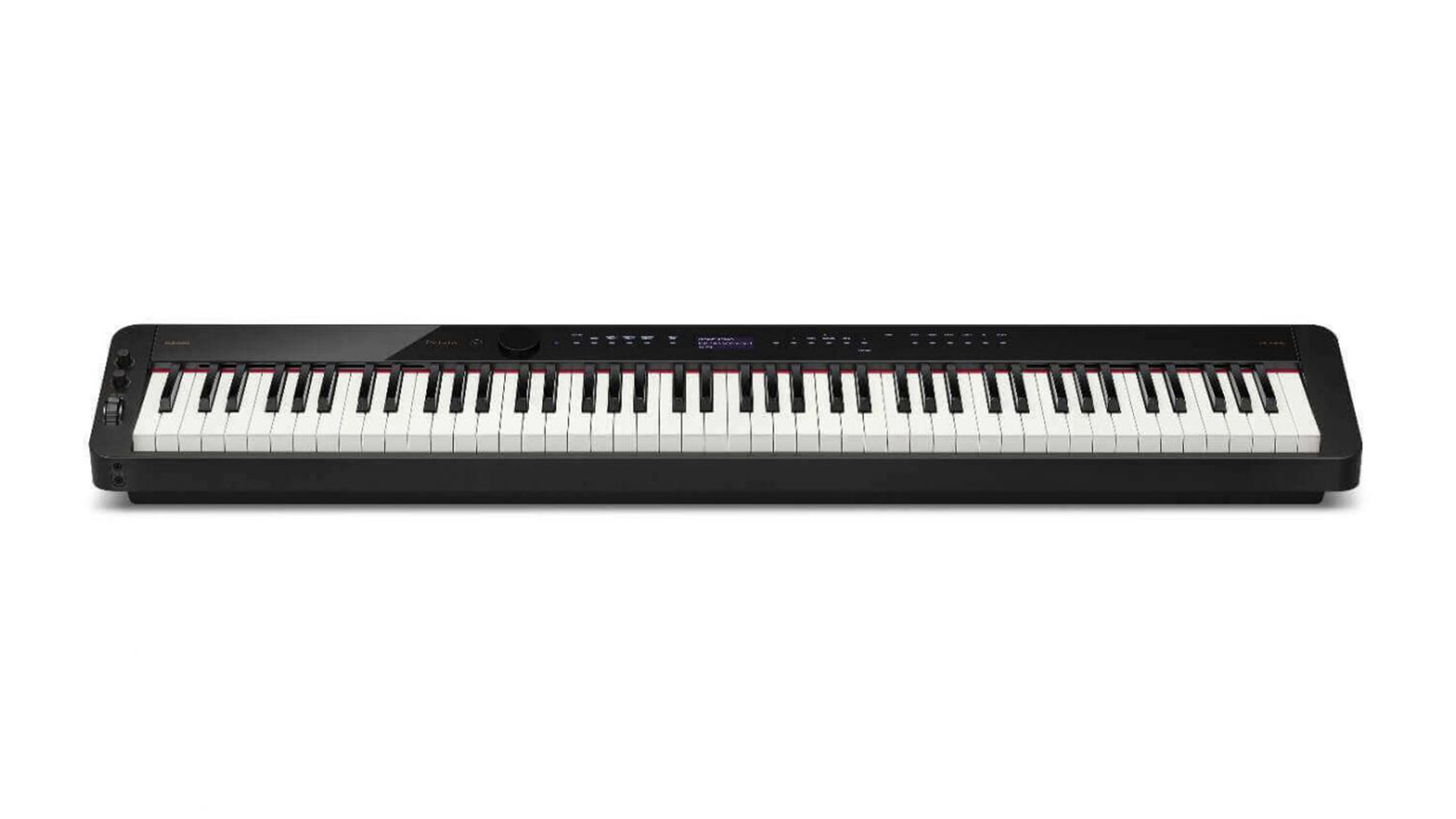
Specifications
Reasons to buy
Reasons to avoid
Casio markets its PX-S3100 as both a domestic portable digital piano and a professional stage piano, giving it a split personality that, once you understand it, makes more sense than you'd expect.
Released in October 2021, this affordable 88-key Casio is really just a mild refresh of the PX-S3000 piano introduced at NAMM in 2019. The refresh sees an improved grand piano tone, a speaker upgrade, Bluetooth enhancements and some small cosmetic changes. All minor stuff, but welcome nonetheless.
Although the PX-S3100 betrays its amateur leanings a bit with its onboard speaker system, 200 auto-accompaniment styles and dual-headphone outs (one for teacher, one for student), the range of sounds on offer is a decent 700, a big improvement over the cheaper PX-S1100 which only offers a rather paltry 18 tones.
The Grand Piano Concert patch is full, resonant, harmonically rich and detailed, thanks to Casio's 'multi-dimensional morphing technology'. Technobabble aside, Casio has worked hard to capture how the timbre of a note changes over time, depending on how hard the key is struck.
The rest of the patches are all usable solid choices too - strings, EPs, pipe organs and electric organs. Thankfully, there's nothing gimmicky here, and as you'd expect it’s easy to program splits and layers. Sound combinations can be stored to one of 96 Registration Memories for instant recall.
What makes it a good choice for gigging? Its slim design and light weight make it easy to transport just about anywhere. You don't even need power because the PX-S3100 can be run for up to four hours on just six AA batteries. Then there’s the all-important stereo line outputs - plug a battery-powered speaker or PA into these and you have a fantastic instrument for busking and impromptu outdoor performances.
Just be aware that Casio have had to make some, well, let's just call them optimisations, to squeeze an entire 88-key weighted hammer action keyboard into such a small enclosure. Some users seem to love the action, but others are less keen, so it's worth trying before you buy.
Read the full Casio PX-S3100 review
Best studio piano
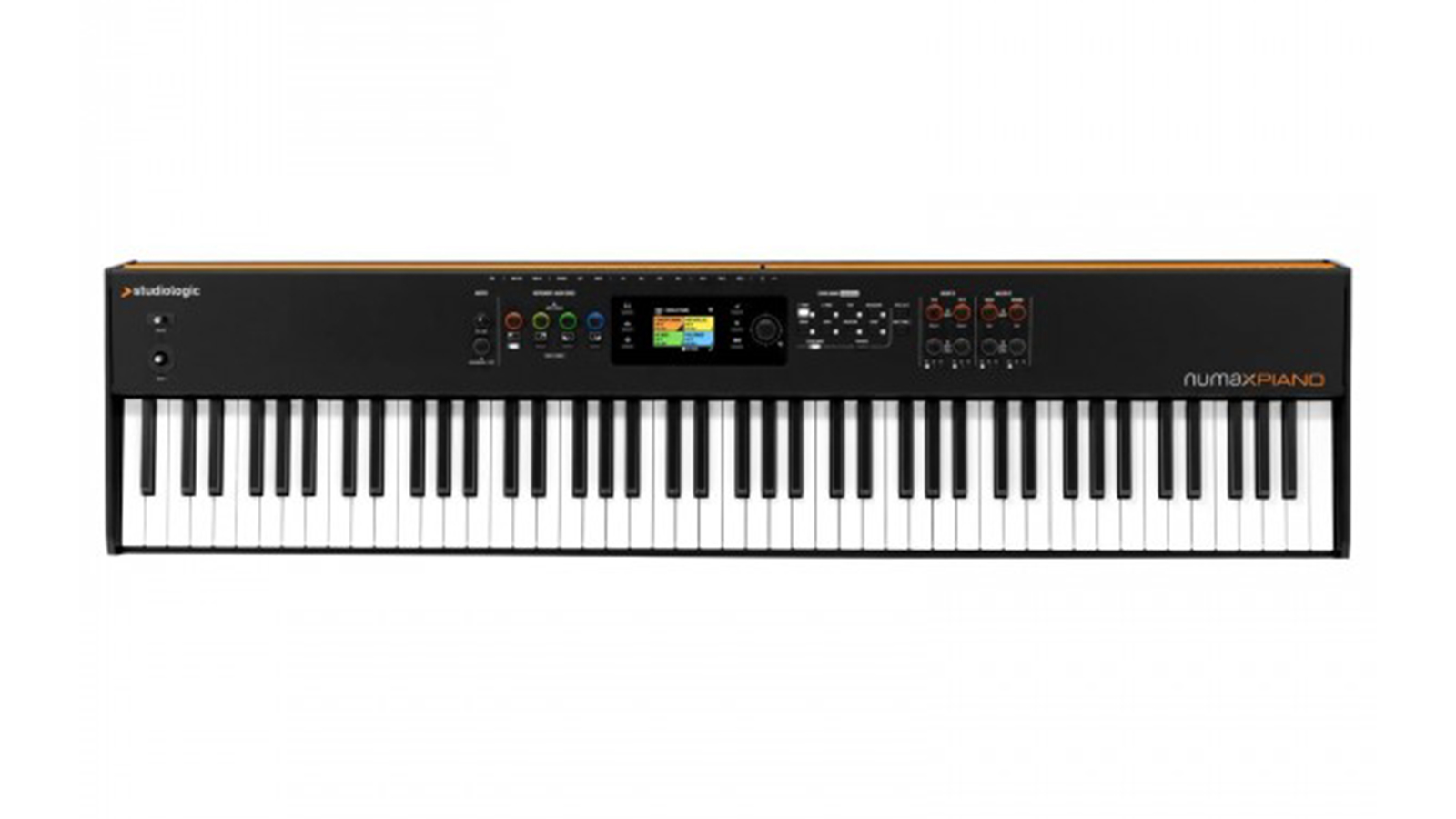
6. Studiologic Numa X Piano GT
Our expert review:
Specifications
Reasons to buy
Reasons to avoid
The Numa X Piano GT is a slightly different take on the stage piano. Not satisfied with it just being a performance-ready keyboard, Fatar-owned Studiologic has developed the Numa X Piano GT to assume the role of mixer and audio interface too.
First the basics. This is a handsome looking keyboard that looks particularly characterful with its wooden end cheeks, coloured LED encoders and colour screen. It's refreshing to see a brand moving away from the usual mono black slabs of plastic and aluminium.
The premium Fatar Grand Touch graded hammer action keyboard with escapement and aftertouch feels fast and expressive, authentically like the real thing. Moving up, the top panel is remarkably spartan. There's a master volume, four rotary encoders with coloured LEDs, a TFT coloured screen surrounded by input and navigation buttons, a main dial/joystick, an eight-button sound bank and finally encoders for insert effects and master effects.
More than 200 modelled sounds can be accessed in the eight banks including all the usual suspects – acoustic pianos, electric pianos, organs, orchestral, synths and so on. If that's not enough then additional sounds are available via Studiologic's Numa Manager desktop app.
Where it gets interesting is that four sounds, or zones, can be played at the same time. Each zone is allocated a colour that's reflected on the screen or on the rotary encoders whenever it is being adjusted in some way. So, it's easy to keep track of which sound you're working on.
In addition, the output and other parameters of each of the four zones can be adjusted in the mixer. Layering sounds is nothing new, but the Numa X Piano GT makes this so easy that getting creative with the process becomes compelling.
Uniquely, the Numa X Piano GT also has four audio inputs that can be routed through the mixer and master effects. In practice, this means that you can plug in a four-piece band and use it as a mixer, effects unit and interface.
Of course, there's nothing to stop you just playing a single piano sound, but the Numa X Piano GT's additional capabilities make it an interesting proposition for small groups.
More options...
So those are our top picks, but there are may more great options to choose from that offer something a little different in terms of features and performance. We've selected some more of our favourites below.

Specifications
Reasons to buy
Reasons to avoid
Roland’s RD range of stage pianos has attained almost legendary status over the past few decades, which goes a long way towards our decision to include two of them on this list.
While the costlier RD2000 featured further up in the pecking order gets the premium, wood-hybrid PHA-50 keyboard action, the RD-88 gets the same PHA-4 keybed as that used in Roland's mid-range home and portable pianos, from the entry-level FP-10 portable right up to the more costly RP-701 and HP-702 home digital models. However, the RD-88 is considerably lighter - two-thirds the weight, in fact - with a form factor not a great deal larger than the actual keyboard itself, which when considering a stage piano to lug from gig to gig is a very big tick in the box indeed.
Another big tick is the vast range of superb quality sounds on offer. The RD-88’s acoustic and electric piano sounds are delivered by the SuperNATURAL sound engines, while everything else - and there’s a lot of everything, with a total of over 3,000 preset sounds available by default - is powered by the same Zen-Core sound engine that forms the basis of many of Roland’s other current keyboards and synths, and you can trust us when we tell you this is no bad thing. If a company such as Roland is going to base a large number of their products around the same sound engine, you can guarantee that that engine is going to be good, and it does not disappoint. The synth sounds are varied and satisfyingly complex, with plentiful searing leads, lush evolving pads and brash and bold polys.
What most stage piano purchasers will be interested in though are the piano sounds, which are second to none, Roland’s SuperNATURAL engine delivering acoustic tones that work brilliantly in a live environment, partnered with immensely satisfying electric pianos that pack in plenty of thump and squeak.
If you’re an Apple user, the RD-88 has another trick up its sleeve in the form of deep integration with MainStage. Essentially Logic Pro without the sequencer attached, MainStage is practically an industry standard source of sounds for live performance, so if you’re not averse to subjecting your MacBook Pro to life on the road, this could be a bonus.
It’s a bit of a surprise to find speakers on board a dedicated stage piano such as the RD-88, but speakers there are, found at either end of the keyboard. They’re by no means powerful enough to be of use for anything other than practising at home, but it’s nice to have them nonetheless, and they can be turned off via a button on the control panel.
With such a large palette of sounds to select from, it’s a shame that the RD-88 lacks the jogwheel found on the RD-2000, but this is a relatively small price to pay for the versatility this instrument offers in such a compact form. If the RD-2000 is beyond your reach, the RD-88 is a more than worthy alternative.
Read our full Roland RD-88 review
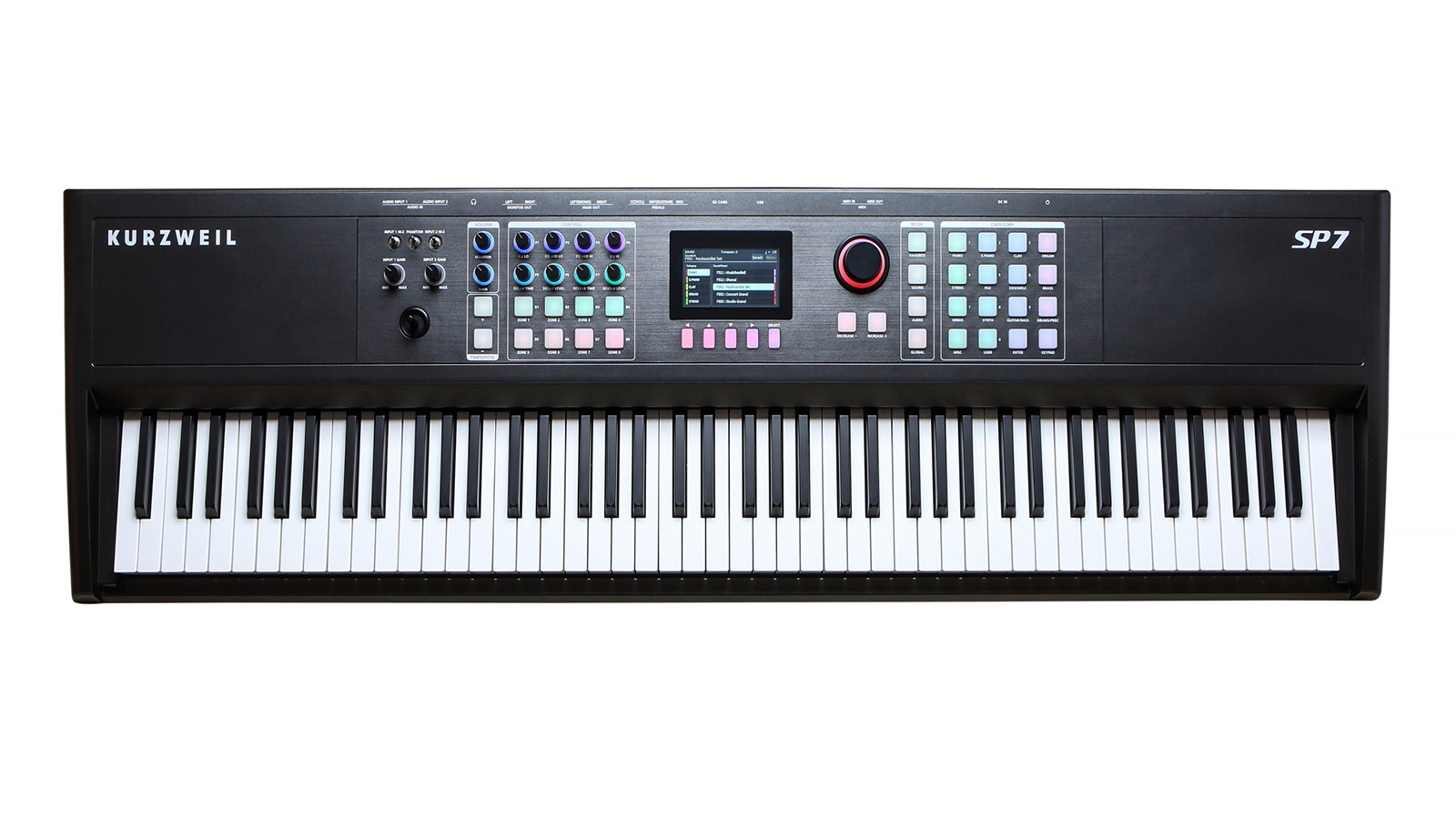
8. Kurzweil SP7 Grand
Our expert review:
Specifications
Reasons to buy
Reasons to avoid
Looking for an easy-to-use stage piano that delivers bucket loads of quality sounds without breaking the bank? Something with 88 keys that's still light enough to lug from one gig to the next? Truthfully, isn't this what most working musicians want from a stage piano?
The Kurzweil SP7 ticks all these boxes. It features Kurzweil’s new, next-generation Authentic Timbre Synthesis Technology (A.T.S.T.) Sound Engine, the centrepiece of which is the German “D” Concert Grand derived from the PC4 workstation. There are two gigabytes of sample sounds, including high-definition Japanese and German grand pianos with string resonance. The KB3 ToneReal organs - authentically modelled from vintage classics - feature real-time performance controls and there are stacks of electric pianos, clavinets, brass, guitars, orchestral strings and more. You can even load patches from Kurzweil's premium Forte piano.
Thirty-two effects units can be chained in hundreds of configurations and it's possible to activate up to four independent arpeggiators for crazily complex rhythms. The SP7 is also 16-part multi-timbral and boasts double the dynamically allocated polyphony of its predecessor the SP6, with an impressive 256 notes. It also offers a larger 4.3” high-resolution colour LCD touchscreen and a few extra presets - 301 as opposed to the 256 on the SP6.
Despite all these features, and we've only touched the surface here, the SP7 is remarkably straightforward to use. It really is just a matter of selecting a patch via the sound bank buttons, which are to the right of the screen, and hitting the fully-weighted hammer action keyboard.
Rotary encoders to the left of the screen can be assigned contextual functions from three easily accessible menus - pressing the neighbouring shift button cycles from one menu to the next. For example, the encoders can dial in effects, behave as drawbars for some of the organ patches or control zone volumes.
It comes complete with a built-in 2-In/2-Out; 24-bit/48kHz USB audio interface if you need to plug in extra instruments for gigs and rehearsals.
Travelling with the SP7 is relatively painless too. It's quite a big lump but it only weighs 27lb (12.27 kg).
FAQs
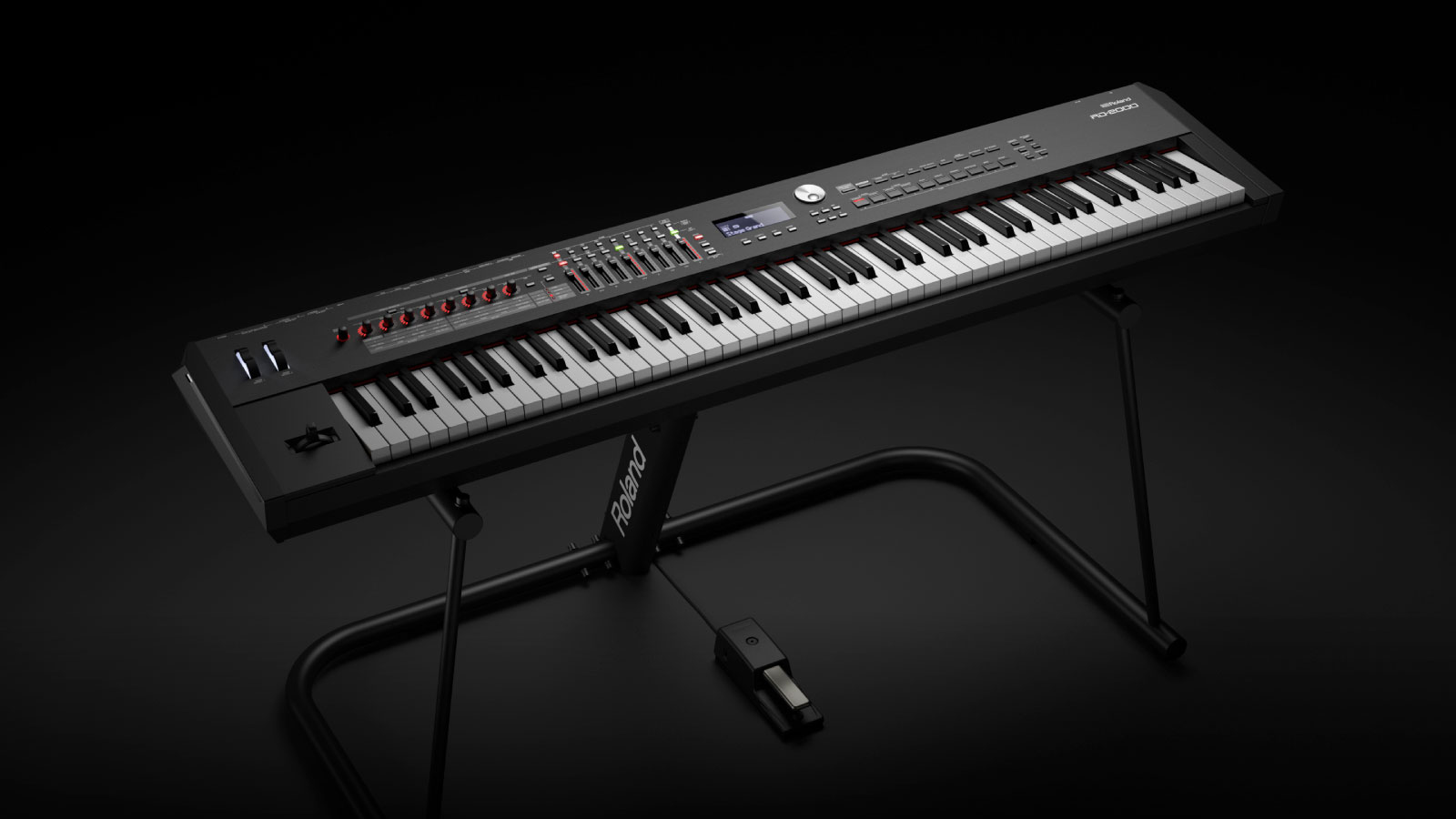
What is a stage piano?
Good question, because most stage pianos look remarkably like the sort of inexpensive digital pianos or keyboards tucked away in people's homes. Big, dark slabs with a screen and lots of buttons.
Trust us, they're very different animals. Stage pianos are built for live performance, not home practice.
Are stage pianos easy to use?
The curtain's up, the pressure is on. The last thing you want to be doing during a gig is stumbling your way around a complex top panel. Just remembering how to play your instrument is hard enough.
The very best stage pianos have a deep feature set conveniently hidden behind a simple, logical top panel. You'll just want to be able to select patches quickly, recall favourites/scenes, work with zones, layers and splits and make some on-the-fly adjustments. The top panel should be working with you in this regard, not against you.
So, seek out simplicity not complexity when it comes to top panel design. Big buttons, rotary encoders and so on. Oh, and leave the complex sound design duties until you get home.
Don't forget that stages can be dark, gloomy spaces. Sliders and rotary encoders with LED tracking are a godsend, as are buttons with individual LED lights. If those lights are contextual – they change colour – so much the better.
Finally, discard that old beginner keyboard and buy yourself a decent stage piano. Your gigging life will be transformed.
What sounds do stage pianos come with?
If you're a classical pianist, all you will ask of your stage piano is that it feels incredibly authentic to play and sounds like a concert grand! This is where models such as the Kawai MP 11 SE fit in.
We'd wager that most players, as opposed to pianists, need more sounds – at the very least some good organ emulations and perhaps some synth bass and lead sounds. Those of you working in theatre will require everything from grand pianos to string sections to special effects.
Instead of loading their stage pianos with a fixed set of sounds, many brands are now curating huge online libraries of tones that can be downloaded from the internet. These sounds can be swapped in and out of their stage pianos at will. Collections like these are constantly growing, so look out for this feature if you need a vast amount of sonic versatility.
What keyboard size and type do you need?
You may have noticed that some stage pianos come in two or three different sizes – an 88 key model, a 76 key model and finally a compact model with even fewer keys. The Nord Stage 4 is a good example.
The 88-key models are aimed squarely at pianists, and it's likely they'll come with hammer action, weighted keyboards to give that acoustic grand feel. The smaller sizes are aimed more at organists and synth players (or pianists with not much room!). They tend to be fitted with waterfall or synth-type keybeds.
Who makes the best keyboards? Kawai, Yamaha, Fatar…? That's a question only you can answer, so try out as many as possible.
Buying advice

Stage piano build quality and weight
MusicRadar's got your back
Stage pianos are made to take a pounding, performance after performance. They'll have tougher casings, and more robust switches and buttons. Rotary encoder stalks and slider poles will be made from metal, not plastic. The outer casing will almost certainly be aluminium too, although cheek-ends are commonly plastic or sometimes wood.
Conversely, a stage piano should be light, so that it's easy to carry from gig to gig. The good brands go to a lot of trouble developing stage pianos that perform like they're hewn from rock, but when it's time to pack them away they feel like there's nothing to them.
Speakers
Built-in speakers are traditionally the preserve of home digital pianos and arranger keyboards, so if your stage piano doesn’t have them, don’t worry, you're not missing anything. Internal speakers aren't going to be loud enough for even the smallest of gigs, so they're often discarded to save both weight and money. Instead, look for a sturdy pair of XLR or 6.3mm jack audio output sockets on the back panel that will allow you to connect to a keyboard amp, a PA speaker or a mixing desk.
That said, speakers have found their way into a few models - the Roland RD-88 has some, and the Korg SV2 has a twin brother in the shape of the SV2-S that comes with a very rad-looking pair of speakers that certainly aren’t just for show. If you’re after a true stage piano, however, speakers probably shouldn’t be at the top of your list of essentials when buying.
Polyphony, layers and splits explained
Polyphony governs how many notes can be played at the same time. It's not to be confused with the closely related timbrality, which governs how many different sounds can be played at the same time. The higher the polyphony, the more likely it is that your stage piano will be multi-timbral too.
High polyphony is very important for classical pianists. Sure, they've only got a maximum of ten fingers, so what's the big deal? Here's just one example. Imagine a concert pianist playing a long, fast legato run with the sustain (damper) pedal engaged. That beautiful cascade of notes is going to sustain for ages, with all the individual sounds running into one another. Limited polyphony will cut some of those notes off early, which is clearly undesirable!
Stage pianos commonly have features known as splits and layers or layering. If your piece requires a funky bassline with a lead synth being played over the top of it then you can split your keyboard into two. Perhaps the bottom third will be assigned to the bass sounds, freeing up the rest for the synth.
Sounds can be layered too. Consider a delicate piano part. Perhaps, it could be improved, or made more dramatic with some strings accompanying it? Layering enables you to do just that. Hit a key and you'll hear both the piano and the strings playing at the same time. Some keyboards will allow you to combine both splits and layering – the Studiologic Numa X Piano GT, with its colour coded mixer, makes it very easy to manage all sorts of potentially complex layers, splits and zones.
Effects
Every stage piano should come with some basic effects, such as reverb, delay and a rotating speaker for organ models. Some go much, much further with a host of modulation effects and even amp modelling.
MIDI
It's not uncommon to designate a stage piano as the central controller for your entire live setup. Fortunately MIDI is ubiquitous, but if this is important to you, look out for comprehensive implementation. Some stage pianos are better in this regard than others.
How we chose the best stage pianos

Here at MusicRadar, we are experts in our field, with many years of playing, creating and product testing between us. We live and breathe everything music gear related, and we draw on this knowledge and experience of using products in live, recording and rehearsal scenarios when selecting the products for our guides.
When choosing what we believe to be the best stage pianos available right now, we combine our hands-on experience, user reviews and testimonies and engage in lengthy discussions with our editorial colleagues to reach a consensus about the top products in any given category.
First and foremost, we are musicians, and we want other players to find the right product for them. So we take into careful consideration everything from budget to feature set, ease of use and durability to come up with a list of what we can safely say are the best stage pianos on the market right now.
Find out more about how we test music gear and services at MusicRadar.
Why you can trust us

✔️More than 9,500 reviews on-site
✔️Over 17 years of product testing
✔️ 2.9 million monthly users globally
With more than 17 years of experience, MusicRadar is the premier music-making website in the world. Run by musicians for musicians, we offer expertly written gear round-ups and high-quality, authoritative reviews by an extensive team of highly experienced industry professionals.
We also interview world-renowned musicians and stars about their creative processes and the nuts and bolts of their gear and technique. This gives fans an insight into the actual craft of music-making that no other music website can.
But that's not all. We also provide excellent tuition, from bite-sized tips to advanced techniques and guidance from recognised musicians.
As well as delivering high quality written reviews and features, we also produce a wealth of video content on YouTube. MusicRadarTV is where you'll find all of our access-all-areas interviews, hot gear demos and exclusive video lessons.
Below you'll find more information on the authors of this guide.
Related buyer's guides
- Explore our pick of the best keyboards stands for all budgets
- These are the best piano VSTs
- Display your notes on one of the best music stands
Get the MusicRadar Newsletter
Want all the hottest music and gear news, reviews, deals, features and more, direct to your inbox? Sign up here.
When Simon's childhood classical guitar teacher boasted he 'enjoyed a challenge', the poor man had no idea how much he'd underestimated the scale of the task ahead. Despite Simon's lack of talent, the experience did spark a lifelong passion for music. His classical guitar was discarded for an electric, then a room full of electrics before Simon discovered the joys of keys. Against all odds, Simon somehow managed to blag a career as a fashion journalist, but he's now more suitably employed writing for MusicRadar and Guitar World. When not writing or playing, he can be found terrifying himself on his mountain bike.
MusicRadar deals of the week: Enjoy a mind-blowing $600 off a full-fat Gibson Les Paul, £500 off Kirk Hammett's Epiphone Greeny, and so much more
“For those who think they know Joel’s story, as well as those who are not as familiar, I believe this two-part film is both a revelation and a surprise”: New Billy Joel doc is on the way
